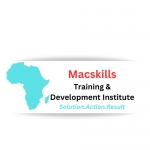|
|
Gis And Remote Sensing In Conservancy And Wildlife Management
USD 1,250 |
Venue: Nairobi
Geographic Information Systems (GIS) involve collecting/capturing, storing, processing, manipulating, analyzing, managing, retrieving and displaying geo-referenced data. Remote sensing is the acquisition of information about an object or phenomenon without making physical contact with the object. Wildlife management requires reliable and consistent information on the abundance, distribution of species and their habitats as well as threats. Therefore, the application of remote sensing (RS) and geographic information system (GIS) in the wildlife management and conservation aids in data collection and analysis of wildlife abundance, their distribution as well as providing data suitable for conservation planning and management.
Duration 5 Days
Target Audience
This course targets individuals working with wildlife especially the vets, tour guides, rangers, and all persons interested in learning about how to use GPS on wildlife.
Objectives
At the end of this course, the participant will be able to:
- To introduce participants to the principles of GIS and Remote Sensing
- To introduce participants to concepts of wildlife management and conservation
- To expose participants to data capture, input, manipulation and display by GIS
- To introduce participants to GPS/GNSS systems
- To explain to the participants GIS database requirement and development for wildlife management and conservation
- To introduce participants to the application GIS and Remote Sensing techniques in wildlife management and conservation
- To develop sound basis of understanding applications of GIS and RS in Wildlife management and conservation through case studies
Course Outline
This course reviews the application of remote sensing and GIS techniques in wildlife management and conservation under the following themes:
Module 1: Introduction and definitions of key concepts
- Introduction to GIS and remote sensing in wildlife management and conservation
- Introduction to GIS software
- Planning for a GIS system installation
- Working with a GIS software
Introduction to GPS
- GPS data collection
- GPS data download
Module 2: GIS data management
- GIS data sources
- Database creation and maintenance
- Working with Data from different sources
- Integrating GPS data into GIS
- GPS application in spatial database development
Module 3: Mapping
- Mapping wildlife distribution
- Mapping wildlife resource requirements
- Mapping and modeling habitat suitability for Wildlife
- Habitats and habitat maps
- Mapping suitability for wildlife
- Accuracy of suitability maps
- Modeling species-environment relationships
- Transferability of species
- Innovative mapping of wildlife and its physical Environment
Module 4: Analysis and Monitoring using GIS and remote sensing
- Use of GIS and remote sensing in Spatial Analysis and Visualization
- Monitoring Habitat Characteristics Using GIS and Remote Sensing
Module 5: public participation and mobile data gathering
- Gathering GIS data using mobile phones
- Participatory GIS
Case studies in conservancy and wildlife management
Certification
- Upon successful completion of this training, participants will be issued with Macskills Training and Development Institute Certificate
Training Venue
- Training will be held at Macskills Training Centre. We also tailor do the training upon request at different locations across the world.
Airport Pick Up and Accommodation
- Airport pick up and accommodation is arranged upon request.
Terms Of Payment
- Payment should be made to Macskills Development Institute bank account before the start of the training and receipts sent via email.
| Nairobi | Dec 16 - 20 Dec, 2024 |
Registration: 09:00:am - 04:00:am
| USD 1,250.00 | |
Mackskills Development Institute +2541140877180
Related Courses
 Training On Quantitative Data Management Analysis And Visualization With Python
Training On Quantitative Data Management Analysis And Visualization With PythonOn going
12 days, 16 - 27 Dec, 2024
Macskills Training & Development Institute



